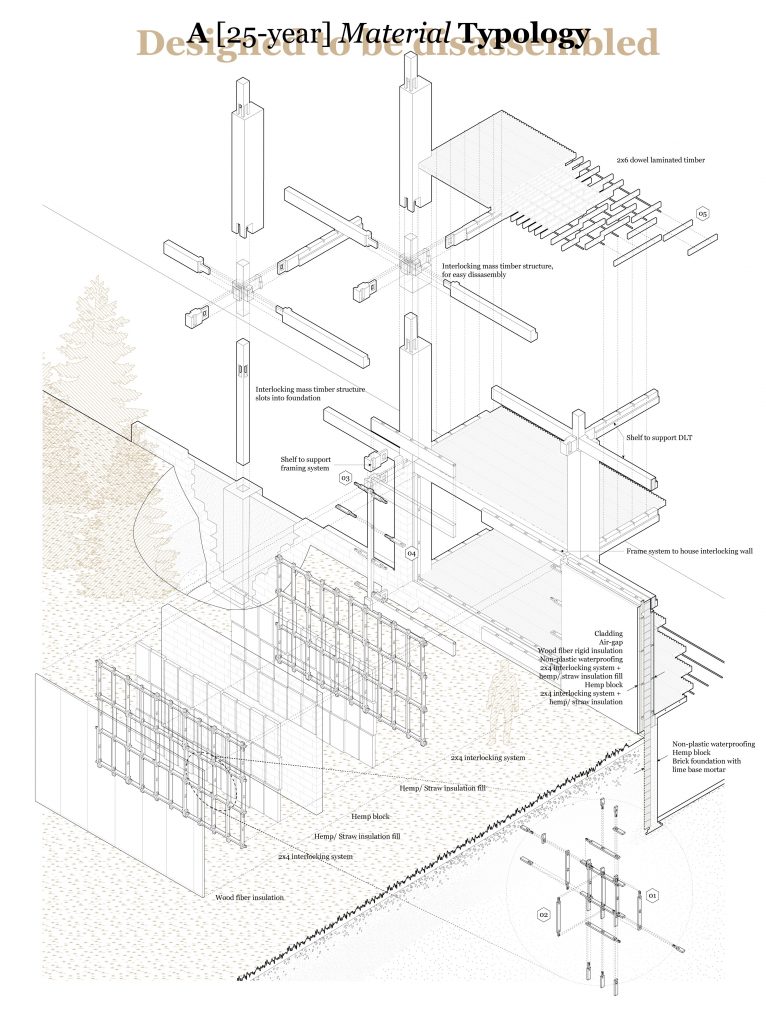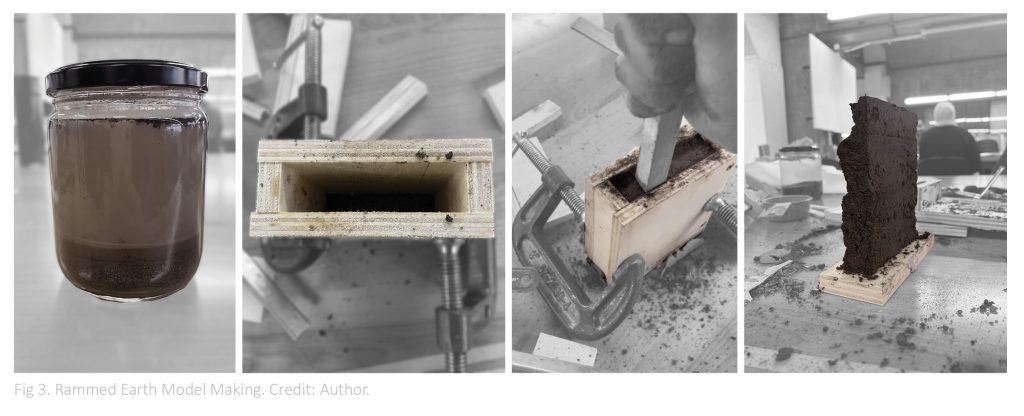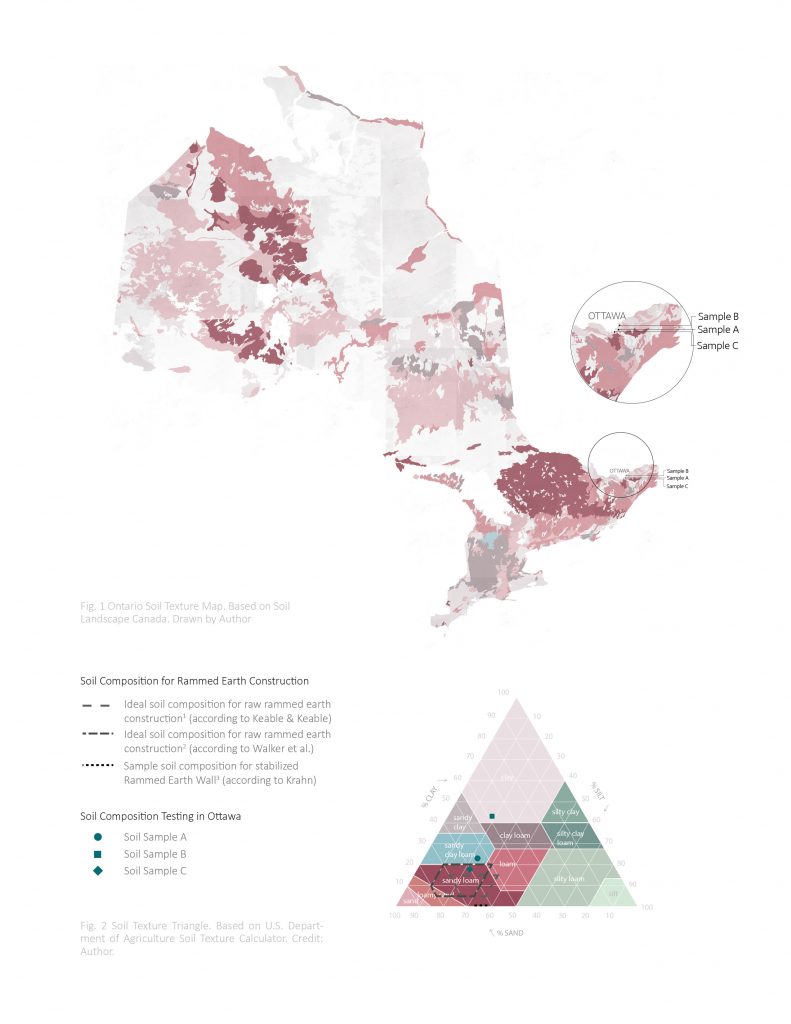Winners of the 2024 Maxwell Taylor Prize
By Maria Cook
January 17, 2024
Two Master of Architecture students have won a Maxwell Taylor Prize for thesis work that emphasizes building technology.
Frank Hinoporos takes home the First Place award of $3,000 for his thesis: Disrupting the Global Supply Chain in Architecture: A Hyper-local Approach to the Built Environment. His thesis supervisor is Associate Professor Sheryl Boyle.
Nadia Kriplani has won $2,000 as the Second Place winner for her thesis: [Re]Integrating Rammed Earth: Regulatory and material challenges and opportunities of rammed earth construction in Ontario. Her thesis supervisor is Associate Professor Lisa Moffitt.
The jury members were Director Anne Bordeleau and Associate Professors Lisa Moffitt, Johan Voordouw, and Manuel Baez.
The Maxwell Taylor Prize goes to students in their final year of the Master of Architecture program whose thesis work reflects rigor and excellence in research and design, emphasizing building technology. A bequest from the estate of the late Mabel Leona Taylor endowed the annual award in 1998.
First Place ($3,000)
Frank Hinoporos
Project Title: Disrupting the Global Supply Chain in Architecture: A Hyper-local Approach to the Built Environment
Supervisor: Associate Professor Sheryl Boyle


Description: The building industry has come to rely heavily on the global supply chain. This has resulted in the homogenization of the built environment across the globe, with materials such as concrete, glass, and steel becoming ubiquitous. These materials, from their manufacture to transportation, and during construction adversely contribute to climate change. One solution is the use of local materials in construction. This thesis explores how over the next century, Ottawa can create an architectural ecosystem, that is minimally reliant on the global supply chain and uses only materials that are local to the region. Local materials, in this case, are defined as materials that are harvested or extracted from in and around Ottawa, as well as materials extracted from existing built structures.
Jury Comments: This thesis hypothesizes about a radical low-carbon constructional strategy that is divorced from global supply chains for Ottawa’s housing stock. The thesis is rigorously researched and immaculately supported with material geography mappings, stick-frame typological drawings, and a series of repurposed wood frame constructional material tests. The jury appreciated the rigour of the work, the clear parameters of investigation, and the material ethical imperative driving the project.
Second Place: $2,000
Nadia Kriplani
Thesis Title: [Re]Integrating Rammed Earth: Regulatory and material challenges and opportunities of rammed earth construction in Ontario
Supervisor: Associate Professor Lisa Moffitt


Description: This thesis tackles the topic of rammed earth construction in Ontario from two perspectives: looking at issues with the sustainability of modern rammed earth and the limitations created by local codes and standards in Ontario. These topics are explored through soil mapping; review of international codes and standards; material studies; and conversations with local experts (including a builder, an engineer, a consulting firm, and a policy analyst.) Throughout this research, I have found that the underlying issues preventing wider-scale adoption of rammed earth construction in Ontario are lack of awareness, lack of material lobbying, and lack of research and development funding. With this thesis, my aim is to compile the knowledge acquired from my explorations and propose a standard for Rammed Earth Construction in Ontario, as well as some speculative design ‘micro-interventions’, developed as model studies.
Jury Comments: The jury appreciated the careful and grounded approach to the thesis, which bridges structural, constructional, regulatory, and material knowledge about rammed earth construction in Ontario. Through structured interviews with builders, manufacturers, code regulators across Canada, an overview of codes and regulations internationally, and material studies, the author demonstrates a wide topical understanding of an important topic given the urgencies to decarbonize construction.